8.1 General
8.2 Water and Water
Quality
8.3 Requirements to
Water Quality
8.3.1 Bacteriological requirements
8.3.2 Physical requirements
8.3.3 Chemical requirements
8.4.1 General
8.4.2 Requirements to detergents
8.5 The Cleaning Process
8.6 Desinfection
Boxes, containers and other equipment which come in contact with fish during catch, transport and production, have to be cleaned as often as possible and at least in between each use.
Besides the natural micro flora found on fish and shellfish, external microorganisms from the surroundings are added. Bacteria and fungi come through the soil. the air and the water as well as from human contact with raw material.
Slime from fish provides a growth medium for most microorganisms. When the fish is dead, all defence mechanisms stop, and as a result the microorganisms living in the slime start to grow and attack the skin and the flesh. Offensive odours and flavours, discoloration and poor textures is the final result.
The rate of spoilage can be reduced by quick cooling and careful handling of the raw material and use of clean equipment which minimize bacterial contamination.
Water is the cheapest and most convenient cleaning agent to use, but dried organic soil is difficult to remove by simply scrubbing with water, so detergents are added to dislodge, disperse and dissolve soil.
The quality of water used in the fishing industry is an important consideration because both chemical and bacterial contamination of seafoods can occur if polluted water is used. The level of dissolved minerals can also affect the solubility of cleaning and sanitizing agents in water.
Hard water contains elevated levels of calcium and magnesium ions. This water usually comes from limestone areas or from deep wells. The ions in hard water complex out detergents and so either a water softener must be added to remove the ions or excessive amounts of detergents will be needed for effective cleaning.
Rainwater and water from lakes and streams is usually softer, containing less mineral salts
Contamination of lakes and rivers from various pollution sources can render it unsatisfactory for use. In fishing, this water is used not only for cleaning but also for ice manufacture and direct human consumption, so its quality must be known.
These are standard values for a good water quality used for cleaning. Chlorination, filtration, and softening agents can improve water quality.
A great number of detergents are found in the market. These substances are often complex and contain many different chemical components.
Most of the industrial detergents are corrosive and can, when used in a wrong way, cause damage to equipment as well as to persons.
The buyer of detergents has to make sure that the producer gives a thorough description of the chemical composition, areas of use and the correct dosing. Information about storing, safety requirements and marking as well as information on measures to be taken in case of accidents should be included.
The cleaning solution must remove all dirt from the item being cleaned, without damaging it, even after it has been cleaned several times.
The detergent must be stable for storage, i.e., not change appearance form or quality when stored and be quickly and completely dissolvable.
Liquid detergents are easy to use, but expensive. Powder detergents are cheaper, but require more time for accurate dosing and dissolving.
The cleaning process can be divided into two:
It is not possible to use these two processes in combination and get a satisfactory result. This is clearly illustrated in the following example, from tests in the food technology industry:
Table 19 Effect of cleaning systems on bacteria
Bacteria numbers/cm² |
|
| Before cleaning | 2 900 000 |
| After cleaning without detergent | 40 000 |
| After washing with detergent | 5 500 |
| After desinfection | 10 |
| Desinfection without cleaning | 1 200 000 |
A well prepared washing programme has to include the following processes:
Even if a cleaning programme can be set up in general terms, the variations will be many because of types of contamination to be removed, type of equipment to be cleaned and available cleaning equipment.
Cleaning methods
Because dried soil is very difficult to remove, hasing and mechanical scrubbling should be performed as soon as possible before the soil dries. This will reduce the effort needed later on.
There are many methods which can be used, and a satisfactory result can be obtained in several ways. According to the size of the equipment to be cleaned, the location and the frequency of cleaning needed, the following methods can be used:
Manual cleaning
Often, the working area is small or overloaded with other equipment so that manual cleaning is the only applicable method. Brushes of various types are simple to use and will give a satisfactory result in most cases. It is important that the equipment is kept clean and not used for other work.
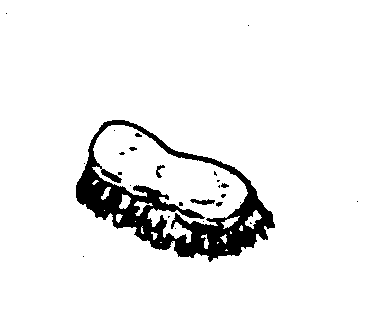
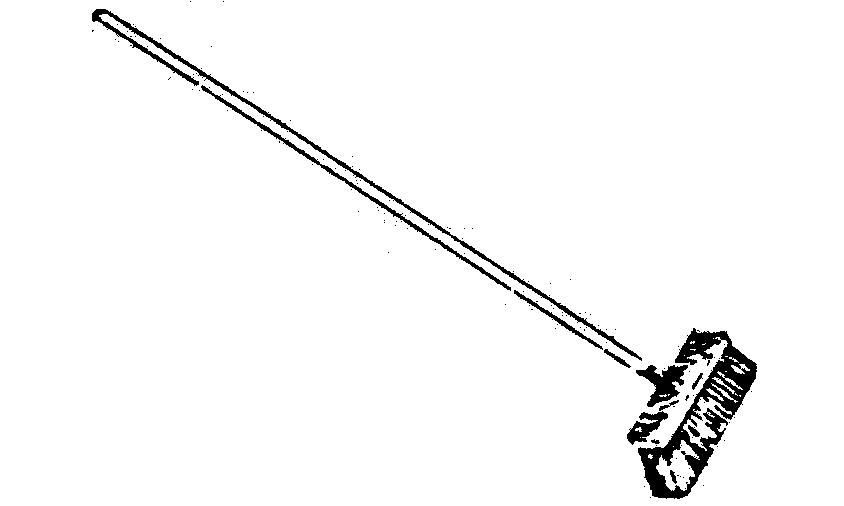
| Figure 19 Hand brush for washing small items |
|
This simple equipment is low priced and well suited for small operations or when the labour cost is low.
If dirt has been allowed to dry, the equipment to be cleaned should be put in water to soak for some time. Washing by hand will then be more simple and will in most cases give a good result.
Foam washing
This process is often used in the food industry. Special foaming detergents are sprayed onto the surface to be cleaned and left in contact with that surface to allow the detergent to dissolve the soil. This is particularly useful on processing equipment where the complexity of design makes manual cleaning impossible. The foam and soil is removed by hasing or manual cleaning. Unfortunately the "airy" consistency of the foam means that it soon assumes the temperature of its surroundings so the extra cleaning power of hot detergent is not possible using this method.
To make the foam, special equipment is needed. This is connected to a tank with special chemicals and the foam/water mixture is sprayed on the items to be cleaned.
High pressure washing
Equipment for this process is found in different shapes and sizes of both portable and stationary types
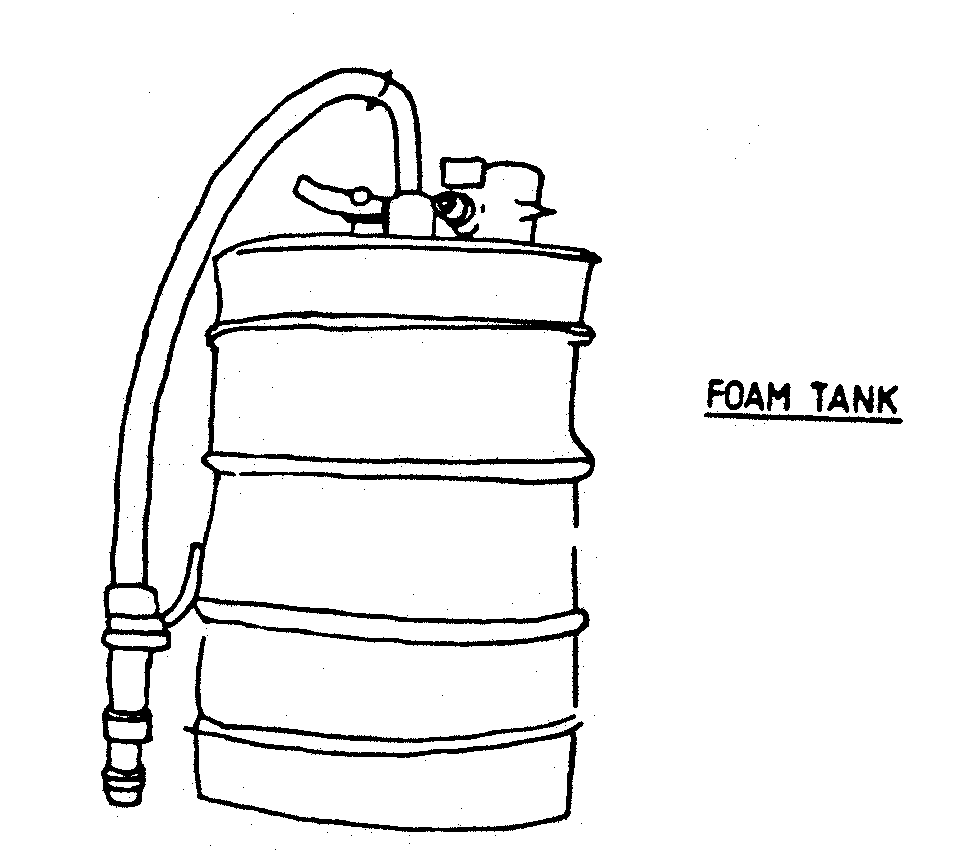
Figure 21 Foam making equipment
The small portable units are often adapted to small production units and are self contained. The stationary ones will be connected to pipe lines leading to strategic places. These units usually supply hot detergent water at pressure.
The small portable units (Fig. 22) give up to 40-110 litre liquid per minute and work under a pressure of 40 kg/m². Some of these units have mechanical equipment for dosing and mixture of detergents and water.
The large stationary pumps can give up to 300-litre liquid per minute under a pressure of approx. 55 kg/cm². When using such equipment the detergent can be dosed/mixed manually or automatically.
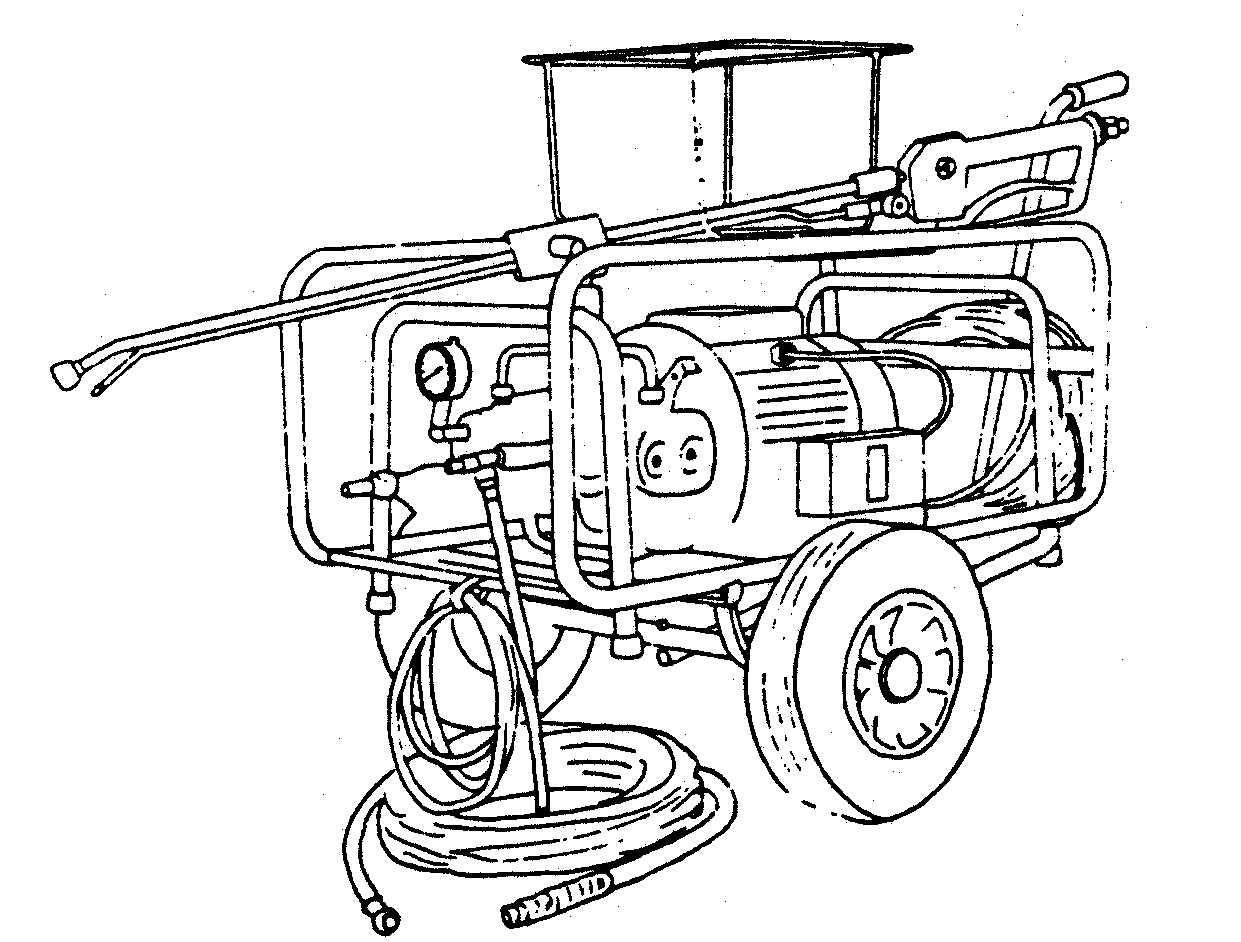
Figure 22 High pressure washer
| Total weight: | 67 kg |
| Working pressure: | 20.130 bar |
| Water capacity: | 13 l/min |
| Water connection: | 3/4 in hose |
| E1. Motor: | 3 kW 220/380 V-3 phases |
| E1. cable: | 8 m |
| H.P. hose: | 8 m |
| Price: | approx. US$ 1 000 |
Specialized pressure cleaning equipment is also available (Fig. 23)
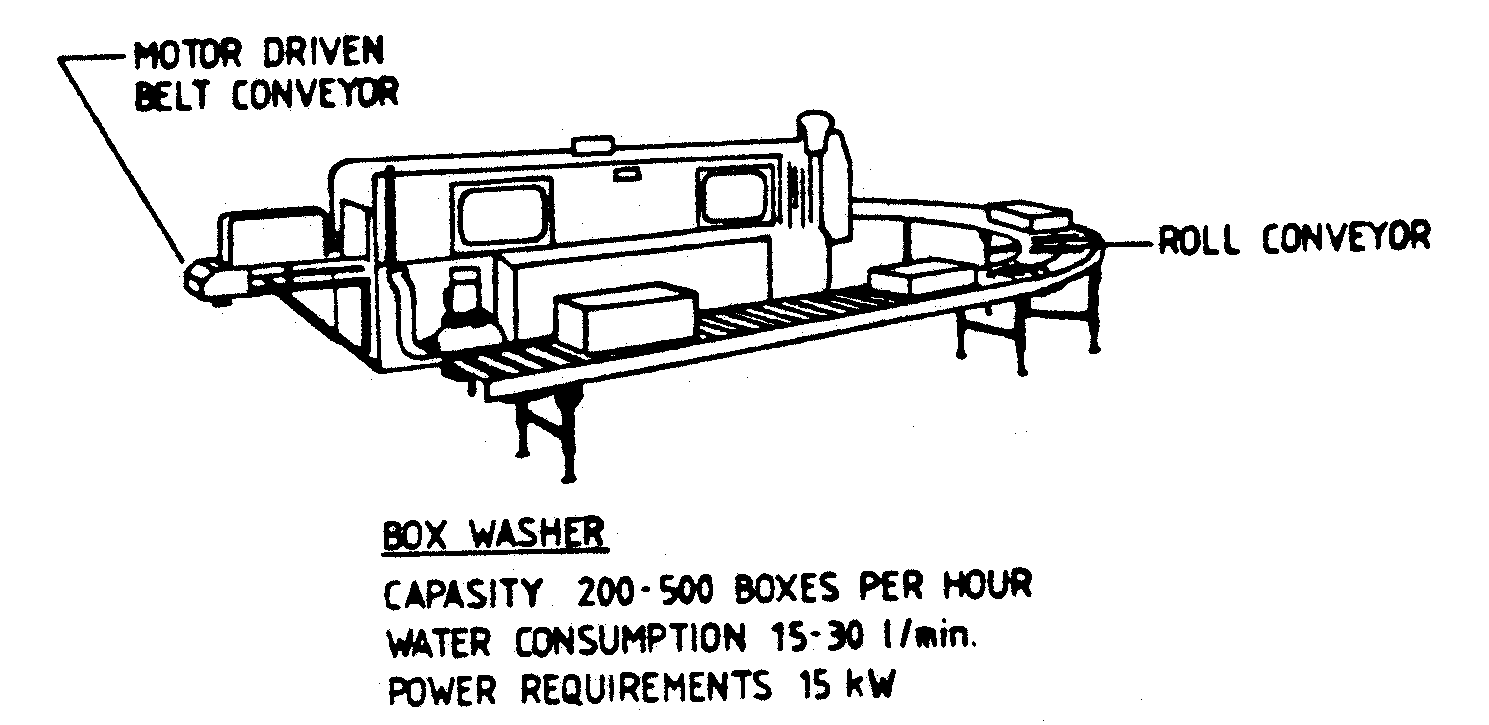
Figure 23 Box washer
Washing and desinfection must be performed separately for maximum effect. There are two reasons for this. Detergents and sanitizers are often chemically incompatible and most sanitizers are complexed not only by microorganisms but also by any organic soil present.
The washing process should remove all the soil and some of the microorganisms. This should be followed by thorough rinsing to remove all detergent then application of a sanitizer or disinfectant which will kill most microorganisms and inhibit the growth of others. This should be left some time to allow it to work before rinsing off.
Desinfection is not only done to boxes and containers, but to all other equipment as well as floors and walls.
Below follows a rough list of existing types of desinfection products.
1. Chloride products
2. Jodine products
3. Phenoles
4. Alcohols
5. Quaternary ammonium compounds
A variety of methods are available for application of sanitizers; these include manual spreading, spraying and fogging for enclosed tanks containers, etc..
Cleaned boxes made of modern materials like plastic, ought to have no more than 10.20 nos of bacteria per cm² on the surface when being examined.